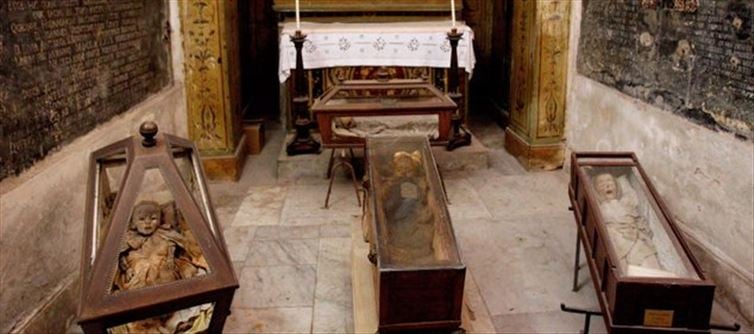
The most touching of the corpses are the mummies of the children preserved in the "Child Chapel." They are well-preserved and look like sleeping dolls.

An underground tomb in Sicily contains thousands of mummies and skeletons. Of these, 173 belonged to infants. Why are the bodies of children kept there with the skeletons of adults? How did these children die? Researchers are now trying to find answers to such questions.
Scientists are using X-ray technology to unravel the mysteries surrounding their lives and deaths. A team of british scientists has launched a two-year investigation into the incident.

Children's mummies and skeletal remains are kept in the Capuchin Catacombs in Palermo, northern Sicily. This cemetery arouses the curiosity of many researchers around the world.
The cemetery has the largest number of mummies and skeletons in Europe. A total of 1,284 naturally mummified bodies were found there. They are all believed to date from 1787 to 1880.

Although it is clear that they are young, it is not yet known who they were or how they died.
The body of the priest is kept in the oldest part of the cemetery. They are buried in a hall. In another corridor, women dressed in elaborate costumes and jewellery are buried. The bodies of members of Palermo's aristocratic family are kept in corridors reserved for men.
But the most touching of the corpses are the mummies of the children preserved in the "Child Chapel." They are well-preserved and look like sleeping dolls. Even the faces of many can be clearly seen.
Scientists can find out if a child has any growth defects or diseases, their gender and age by X-ray examination. The research is being led by Dr john H. Snyder, of Staffordshire University.
"Capuchin catacombs are one of the most important collections of mummies in the world. Many of the remains are skeletons, but some are beautifully preserved.

The cemetery was built primarily to bury the monks of the Capuchin Catacombs Monastery in Palermo. However, it was later reopened to the public. In those days, mummifying a corpse was a means of preserving death, status, and honour.




 click and follow Indiaherald WhatsApp channel
click and follow Indiaherald WhatsApp channel